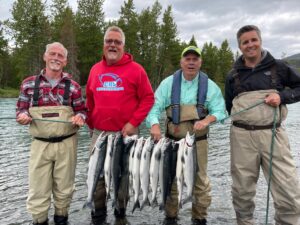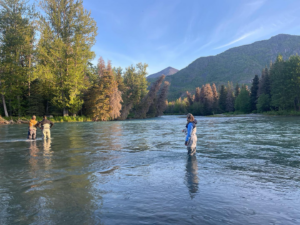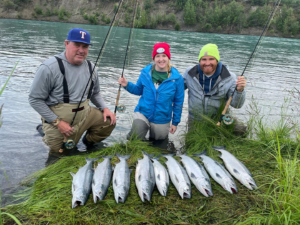Taking children on a fishing trip to the Kenai River can be a fun, memorable, and fulfilling experience.
The thrill of the catch, the beauty of the outdoors, and the joy of spending quality time together make for lasting memories.
However, fishing with kids requires extra preparation and patience to ensure everyone has a fun and safe experience.
Here’s how you can make your Kenai River fishing trip successful with young anglers in tow.
1. Plan Ahead
Want to ensure a successful and stress-free Kenai River fishing trip with kids? Plan ahead.
Start by researching the best times of the year to visit. For the Kenai River, this time is generally between June and September when the salmon runs occur. This timing increases the chances of catching fish like sockeye salmon or rainbow trout (which are exciting and relatively easy for kids to catch).
Beyond logistics, preparing your kids mentally and emotionally for the trip is just as important. Start discussing the trip a few weeks in advance to build their excitement. Show them pictures and videos of the Kenai River and the fish they might catch there.
You can also watch documentaries or read books about fishing to spark their interest. Engage them with discussions about nature and the importance of rivers and fish.
Preparing through practice can also greatly benefit the kids. If possible, take them to a nearby pond or lake to practice casting and reeling in. This will help build their confidence and teach them the patience required for fishing.
2. Find the Right Fishing Guide
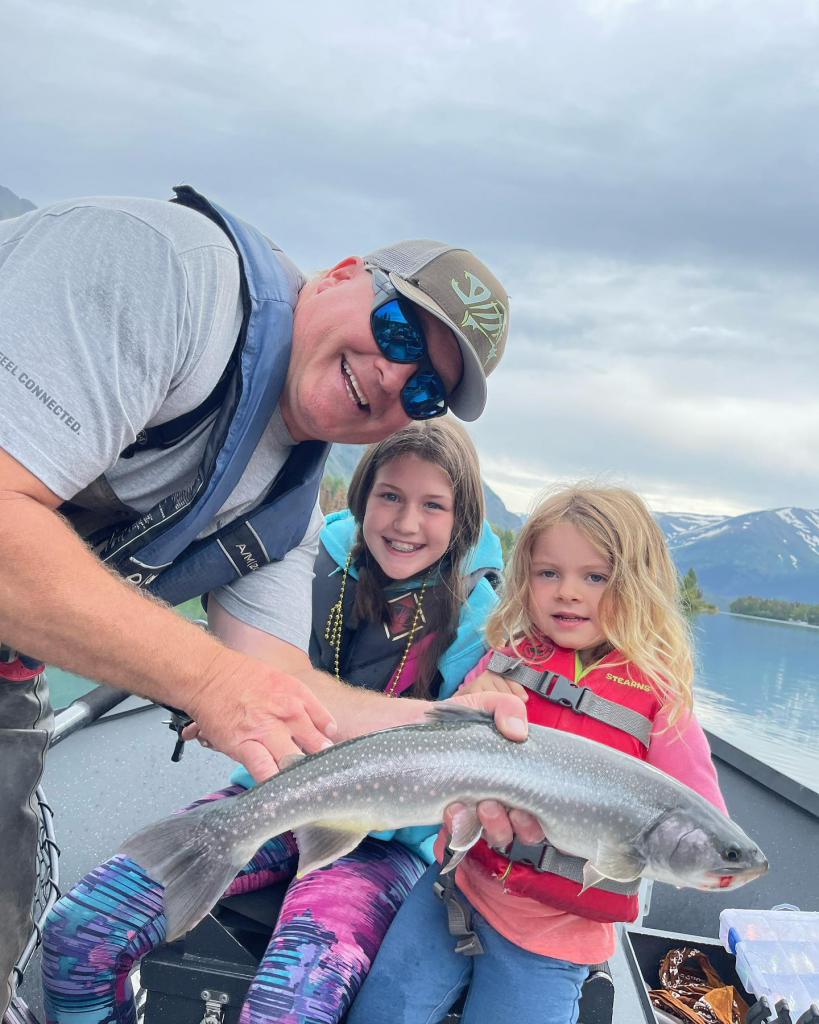
An experienced, skilled, and knowledgeable fishing guide will provide an educational, safe, and enjoyable experience.
At Jason’s Guide Service, we pride ourselves on creating family-friendly fishing adventures that cater to all ages and skill levels. Our guides specialize in helping young anglers catch their first fish while teaching them about the river ecosystem.
We understand that fishing with kids requires extra patience and attention. Our guides are equipped to teach kids how to bait hooks, cast lines, and handle fish.
We also focus on making the experience fun and interactive using techniques and tools that are suitable for children. By choosing us, you’ll ensure that your family is in safe hands, and you’ll leave with great memories and exciting stories.
3. Safety First
Safety is the paramount concern when fishing, especially on a river like the Kenai, known for its cold waters and strong currents.
When planning a trip with kids, you must ensure that all safety measures are in place. This includes wearing life jackets at all times near the water, using the right size and type of gear, and being aware of the water conditions on the day of your trip.
Choosing a knowledgeable and experienced guide is a great way to ensure that all safety protocols are followed. Our guides are trained in first aid and water safety. They’re also familiar with the Kenai River’s specific conditions. They will prepare you and your children on what to expect and how to stay safe, including a briefing on the wildlife in the area, particularly moose and bears, which are common along the Kenai River.
4. Start with Easy Targets
When fishing with kids, particularly for their first few times, success can be a huge motivator. Targeting easier-to-catch species can make the experience both rewarding and enjoyable for young anglers.
Trout, for instance, are abundant and relatively easy to catch. They can be found near the riverbanks and in slower-moving waters where children can easily manage their fishing lines and hooks.
For beginners, techniques like spinner fishing or using simple bait setups are ideal. These methods are easy for kids to understand and execute. Start by using colorful lures that are attractive to fish; these often stimulate strikes from species like rainbow trout and can lead to quick catches.
Celebrate these early catches with plenty of enthusiasm and encouragement.
5. Take Breaks
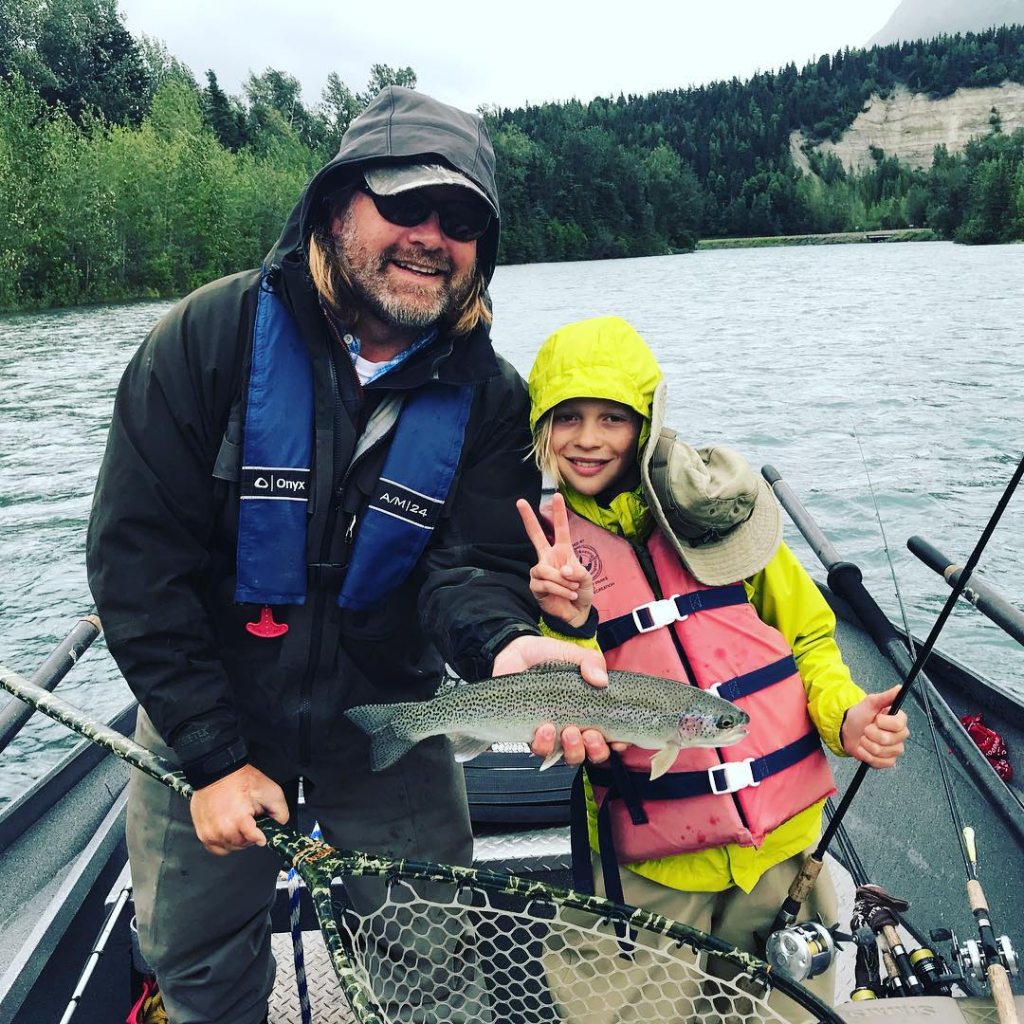
Fishing requires patience, but for kids, the need for constant engagement can often lead to restlessness. Taking regular breaks during your fishing trip can help manage their energy levels and maintain a positive experience.
Use breaks to enjoy snacks, explore the surrounding nature, or relax and tell stories. These pauses will refresh children and give them something to look forward to between bouts of fishing.
Breaks are also a good opportunity to review what’s been caught so far and which techniques have worked (which can be educational and help improve kids’ fishing skills). Discussing the different types of fish in the river, their habits, and the environment can enrich children’s understanding of the ecosystem and their role in it.
Breaks also allow for necessary rest from the physical activity of casting lines and reeling in fish, which can be quite demanding, especially for younger children. Encouraging a moment to rest, hydrate, and enjoy the scenery can prevent any feelings of fatigue and keep spirits high.
Incorporating frequent breaks throughout the day will help keep kids engaged and excited about their fishing adventures on the Kenai River.
6. Make It Educational
Incorporating an educational component into your fishing trip can enhance the experience for children.
The Kenai River, with its rich ecosystem and diverse species, offers a perfect backdrop for educational opportunities. Start by explaining the life cycles of the fish you are targeting, such as salmon, which have a fascinating journey from freshwater to the ocean and back again.
Introduce kids to the concept of sustainable fishing practices, e.g., catch and release, explaining why they are necessary to maintain fish populations and ecological balance. Use the time on the river to teach them about the food chain. Explain how pollution affects aquatic life and what they can do to help preserve these water bodies for future generations.
You can also discuss the roles and features of various fish species in the Kenai River, the impact of weather patterns on fishing conditions, and how different baits and lures work.
Teaching children how to identify fish and their habitats, reading the water, and understanding fish behaviors are also invaluable skills that can deepen their appreciation for angling and the environment.
Recommended Read: Kids on the Kenai
7. Have Fun
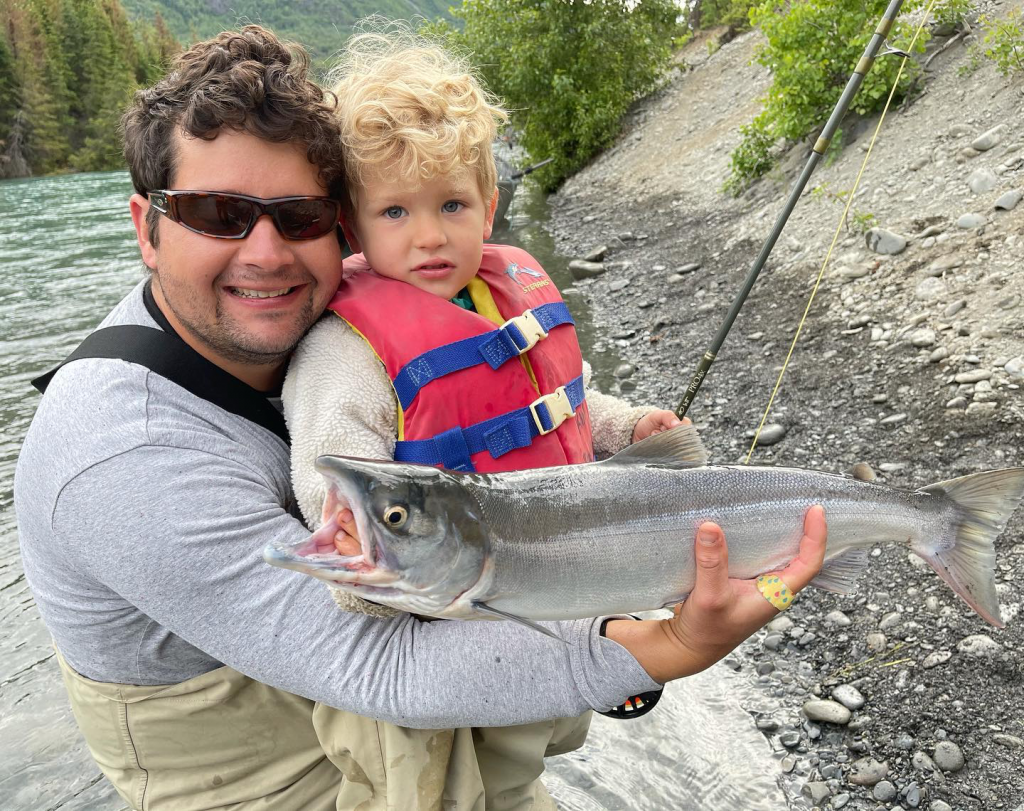
While fishing can be an educational and rewarding activity, the fundamental goal is to have fun.
Encourage a light-hearted atmosphere where kids can enjoy themselves even if the fish aren’t biting. Bring along games, tell stories, or even allow them to play in a safe area near the water during breaks. The excitement of using their fishing gear, whether they catch something or not, can be thrilling for young children.
Make each catch a celebration, no matter the size, and involve the kids in every step, from casting to reeling to release. Their active participation will make them feel accomplished and part of the adventure. Keep the mood upbeat with jokes and encouragement.
Additionally, tailor the fishing experience to what the children find fun. Some may enjoy the quiet patience of waiting for a bite. Others may find joy in more active aspects like casting lines and running along the bank. Being flexible with your plans and responding to children’s energy levels and interests will help keep everyone engaged and happy.
Start Planning Your Trip!
At Jason’s Guide Service, we specialize in family-friendly fishing adventures that are both fun and educational.
Our expert guides are great with kids. We equip every little angler with the appropriate gear and teach them the basics of fishing in a way that’s easy for them to grasp and exciting to put into practice.
Safety is our top priority. We provide all the necessary equipment to keep your family safe while on the river (including life jackets and first aid supplies). We also choose the safest spots on the Kenai River for families.
Whether you’re in the mood for a guided rainbow trout fishing, Guided Silver Salmon Fishing, or Dolly Varden catch and release, we’re here to help! An exciting Cooper Landing fishing trip is right around the corner.












